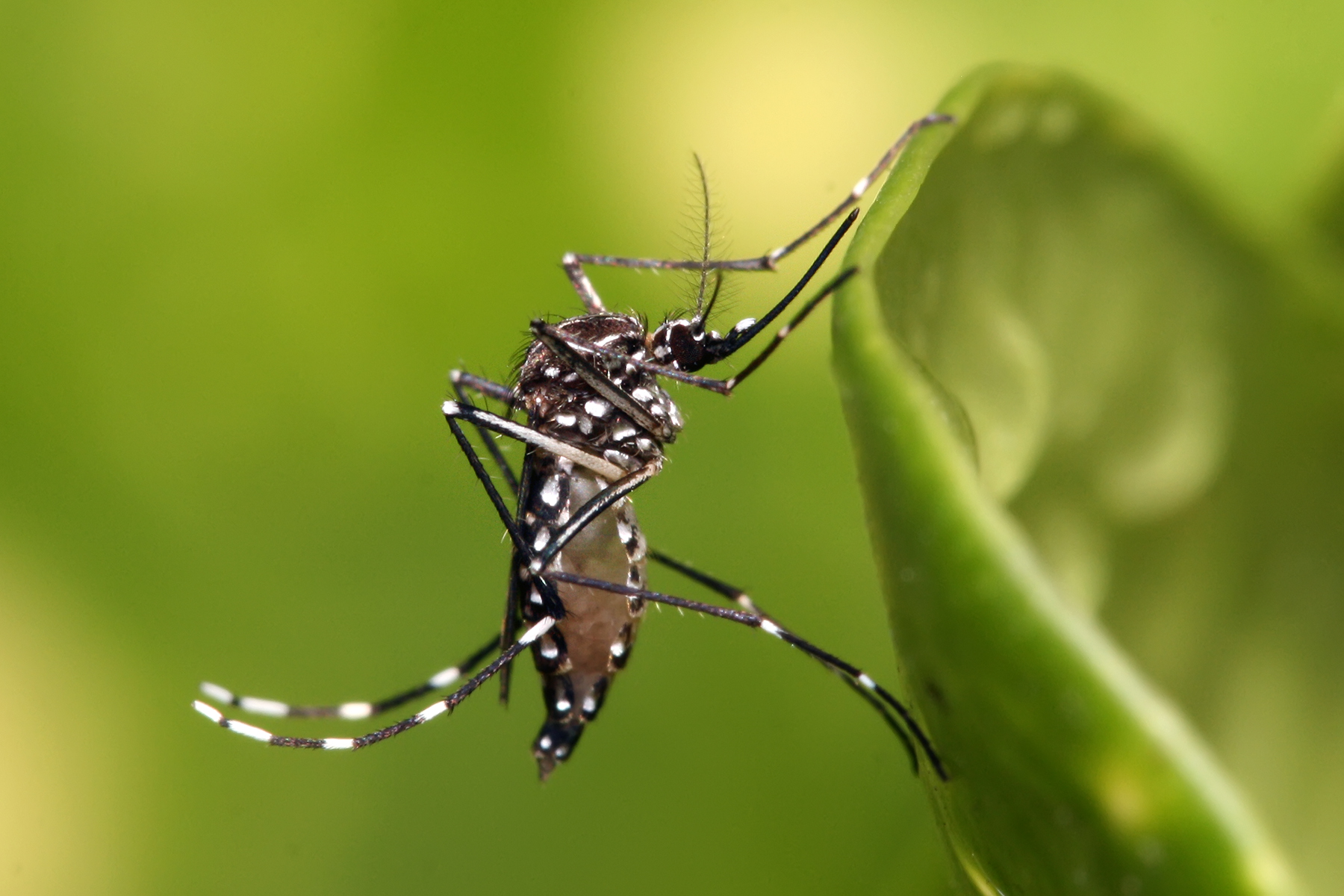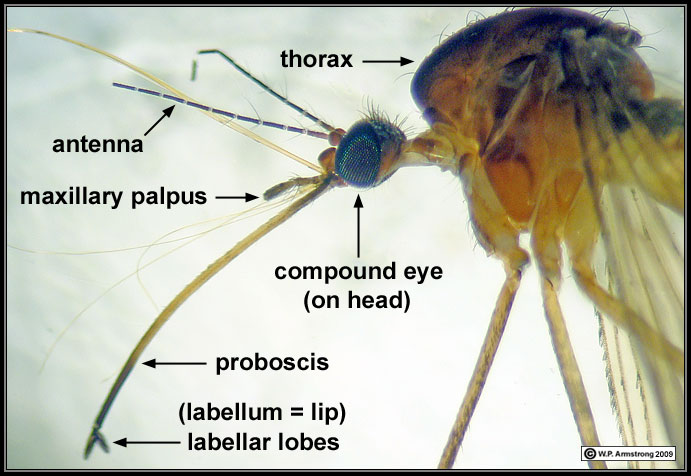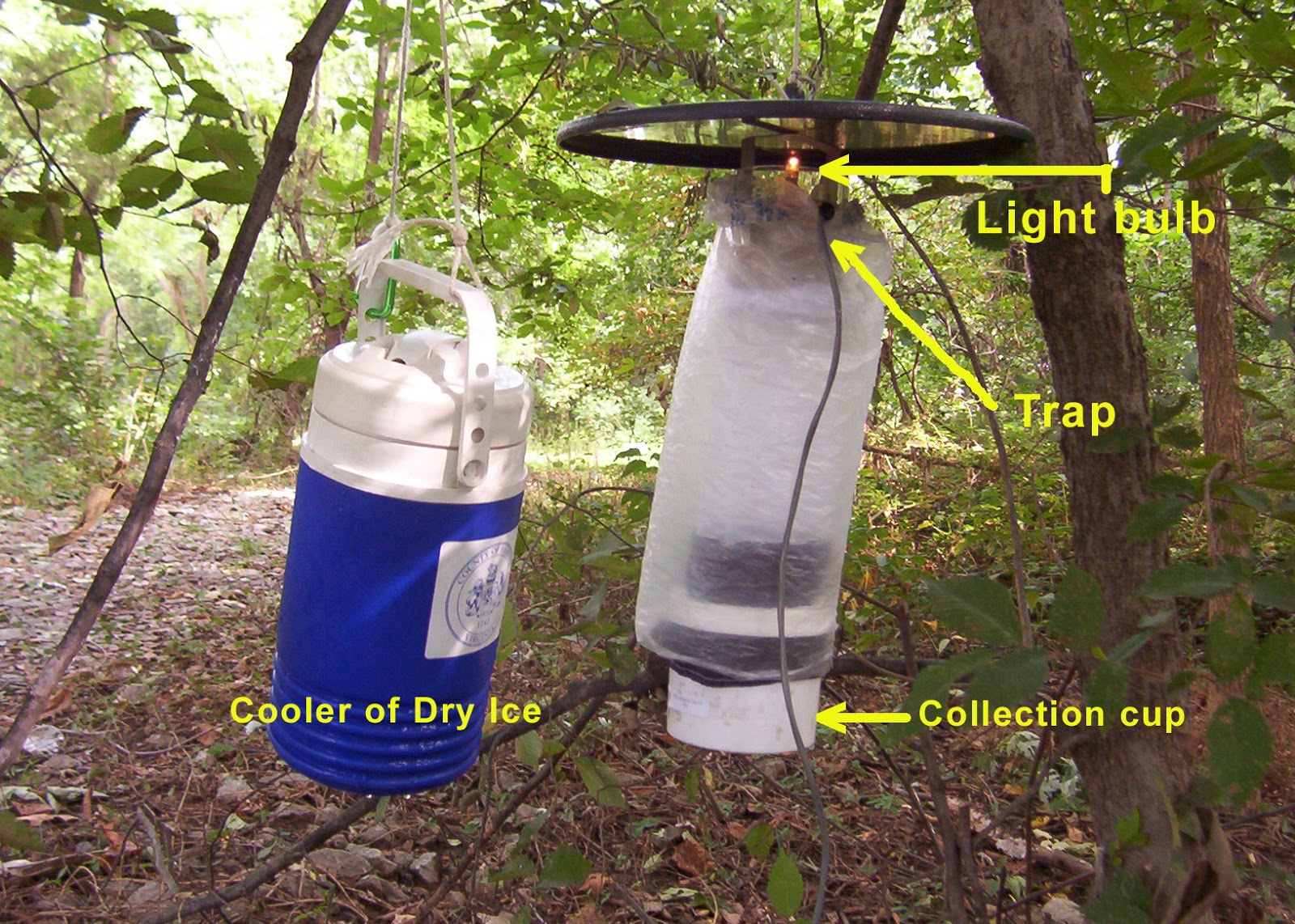
How I, University of Notre Dame PhD Student Heather Forrest Fruscalzo, Plan to Keep You Bite Free
Plants can help us kill mosquitoes! Many ways exist to trap and kill mosquitoes but they only work on females and only during one short part of her life. I’m working on a new way to trap both male and female mosquitoes during nearly their entire adult life. I’m doing this by using plants. Many people don’t know this, but all mosquitoes are plant feeders. (Click here for more little-known facts about mosquitoes.) Their only source of energy comes from feeding on nectar and sap. The only reason the females need blood is for the fats and proteins they require to make their eggs. They can’t get these fats and proteins from plants, only other animals like humans.

This female Aedes mosquito has a sugar meal in her gut. One can see this because her abdomen is swollen with the white sugary fluid.
I’m using the DNA I find in the digestive systems of the mosquitoes to find out which plants they eat the most. We know that they use their sense of smell to find plants, so the plants must be giving off a chemical scent that is attractive to mosquitoes. To find out what these chemicals are I take the scents from their favorite plants and analyze them in a gas chromatograph (or GC for short). The GC separates and identifies the molecules (or set of molecules) the plant is giving off. I’ll then waft these chemicals over the mosquito’s smelling organs (maxillary palps) while watching their neurons fire to see which chemicals are the ones the mosquito reacts to the most. Mosquitoes also use their antennae for chemical sensation but my research is focused on the palps. As you may know, neurons are tiny cells, so how do I “watch them fire”? With the help of a special microscope and some very tiny electrodes we make in our lab, I am able to poke tiny hair-like structures on the palps. These hair-like structures are called sensilla and they contain 3 neurons each. Once I have poked the sensilla with the electrode a computer program allows me to record every time a neuron fires. As each plant molecule wafts by I can see if the mosquito can smell it or not.
Once I have a list of molecules the mosquitoes can smell, I can start combining all of the ones the mosquito finds the most attractive, which I will then combined to produce a bait. I hope that one day this bait will be used in traps that will keep our troops overseas safe from the dengue virus, will keep mothers in South America safe from the Zika virus, and will keep you bite-free during your backyard barbecues.
CO2 traps that are currently used attract female mosquitoes when they are searching for a blood meal. Dry ice is CO2 in solid form as it warms up it turns directly into a gas and leaks out of the cooler. This attracts the mosquitoes that are looking for the breath of an animal. Once they come in close they see the light and are attracted towards in (we call this positive phototaxis). A fan then sucks the mosquito into the collection cup where it is unable to escape. My trap would work in a similar method except I would be using the chemicals found in their favorite plants instead of CO2.

